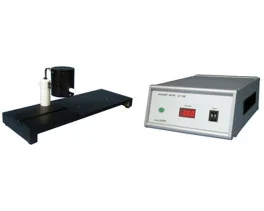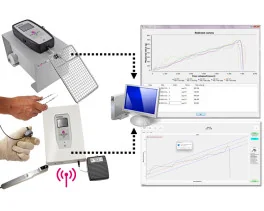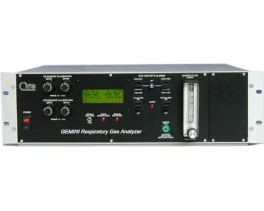Authors
Sa?at K, Filipek B.
Lab
Faculty of Pharmacy, Jagiellonian University, Cracow, Poland.
Journal
J Zhejiang Univ Sci B
Abstract
The aim of this research was to assess the antinociceptive activity of the transient receptor potential (TRP) channel TRPV1, TRPM8, and TRPA1 antagonists in neurogenic, tonic, and neuropathic pain models in mice. For this purpose, TRP channel antagonists were administered into the dorsal surface of a hind paw 15 min before capsaicin, allyl isothiocyanate (AITC), or formalin. Their antiallodynic and antihyperalgesic efficacies after intraperitoneal administration were also assessed in a paclitaxel-induced neuropathic pain model. Motor coordination of paclitaxel-treated mice that received these TRP channel antagonists was investigated using the rotarod test. TRPV1 antagonists, capsazepine and SB-366791, attenuated capsaicin-induced nociceptive reaction in a concentration-dependent manner. At 8 µg/20 µl, this effect was 51% (P<0.001) for capsazepine and 37% (P<0.05) for SB-366791. A TRPA1 antagonist, A-967079, reduced pain reaction by 48% (P<0.05) in the AITC test and by 54% (P<0.001) in the early phase of the formalin test. The test compounds had no influence on the late phase of the formalin test. In paclitaxel-treated mice, they did not attenuate heat hyperalgesia but N-(3-aminopropyl)-2-{[(3-methylphenyl)methyl]oxy}-N-(2-thienylmethyl) benzamide hydrochloride salt (AMTB), a TRPM8 antagonist, reduced cold hyperalgesia and tactile allodynia by 31% (P<0.05) and 51% (P<0.01), respectively. HC-030031, a TRPA1 channel antagonist, attenuated tactile allodynia in the von Frey test (62%; P<0.001). In conclusion, distinct members of TRP channel family are involved in different pain models in mice. Antagonists of TRP channels attenuate nocifensive responses of neurogenic, tonic, and neuropathic pain, but their efficacies strongly depend on the pain model used.
BIOSEB Instruments Used:
Electronic Von Frey 4 (BIO-EVF4),Electronic Von Frey 5 with embedded camera (BIO-EVF5)

 Douleur - Allodynie/Hyperalgésie Thermique
Douleur - Allodynie/Hyperalgésie Thermique Douleur - Spontanée - Déficit de Posture
Douleur - Spontanée - Déficit de Posture Douleur - Allodynie/Hyperalgésie Mécanique
Douleur - Allodynie/Hyperalgésie Mécanique Apprentissage/Mémoire - Attention - Addiction
Apprentissage/Mémoire - Attention - Addiction Physiologie & Recherche Respiratoire
Physiologie & Recherche Respiratoire




































 Douleur
Douleur Système Nerveux Central (SNC)
Système Nerveux Central (SNC)  Neurodégénérescence
Neurodégénérescence Système sensoriel
Système sensoriel Système moteur
Système moteur Troubles de l'humeur
Troubles de l'humeur Autres pathologies
Autres pathologies Système musculaire
Système musculaire Articulations
Articulations Métabolisme
Métabolisme Thématiques transversales
Thématiques transversales Congrès & Meetings
Congrès & Meetings 
